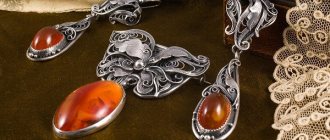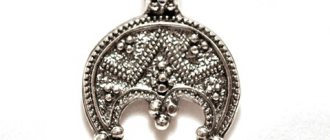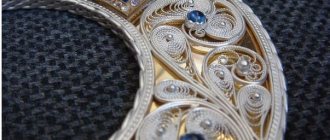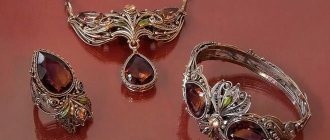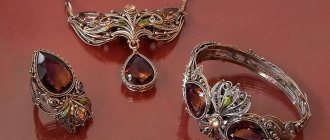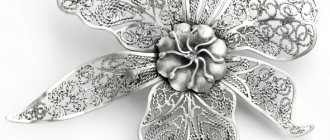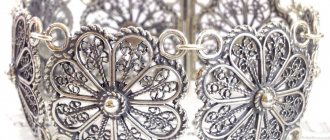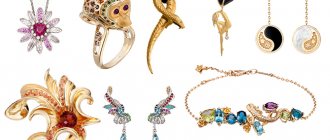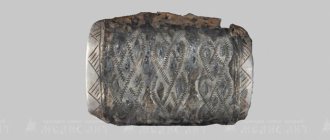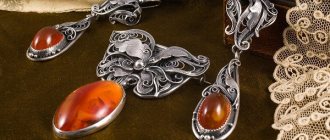Jewelry art is the making of various products, usually from precious metals using semi-precious stones. Initially, such things served not only for beauty, but also to emphasize the high social status of the owner or owner. Also, magical functions were often attributed to jewelry. They were used, for example, as protective amulets and talismans. The history of jewelry goes back to ancient times. Initially, the creation of jewelry did not involve any kind of processing. Over the centuries, art improved, craftsmen created more and more complex and exquisite jewelry. Let's trace the history of jewelry craft and name its outstanding masters.
Ancient Egypt
Jewelry art was surprisingly well developed in Ancient Egypt. The jewelry created there still amazes with its beauty and complexity. In shape they usually resembled images of ancient deities. In Ancient Egypt, they believed that jewelry performed magical functions: they protected against diseases and evil spells, and connected a person with the forces of nature.
Jewelry was supposed to be worn on certain parts of the body. First of all, it was the area of the heart (it was considered the most significant organ). To protect it, items in the form of a scarab were worn on the chest. The beetle symbolized vitality, activity, resurrection. In addition, the middle of the forehead was an important point. Ancient Egyptian craftsmen, when making jewelry for her, used symbols of strength and wisdom, such as images of a snake. Speaking about the technique of making products, it can be noted that chasing and engraving were usually used, and the favorite materials of the Egyptians were gold, silver, obsidian and amethyst.
The history of jewelry
Jewelry has always been in human life and has gone through its development path of a thousand years.
No one knows exactly when the first jewelry appeared. When carrying out various excavations, it turns out that jewelry dates back to the earliest eras in the development of mankind.
Shellfish shells were found in Morocco. They were thought to be part of a necklace that was approximately 110,000 years old. In Asia Minor, the remains of a woman who lived during the Paleolithic era were found. She wore a large number of beads and bracelets, so she can be considered a fashionable lady of that time.
Our ancestors decorated themselves with various objects: shells, flowers, fruit seeds, teeth, bones and even animal horns. The highest priority was given to stones processed by nature itself - quartz, silicon, jade, etc.
The first people to use jewelry were men. They wore them as amulets and amulets that protected from evil spirits. It was also possible to understand from the decorations who in the tribe was the leader, hunter or warrior.
Approximately five thousand years ago, the first jewelry appeared that was similar to what we now understand by this word. Egypt, Italy, China were the first to give modern people the opportunity to emphasize their beauty with the help of jewelry.
Gold, which is one of the most precious metals, marked the beginning of a new history and discoveries in jewelry.
In Ancient Egypt, gold processing became a craft, and goldsmiths began to appear.
They gave rise to the appearance of gold jewelry in the form of rings, chains, and bracelets. Craftsmen used stones such as turquoise, lapis lazuli, and chalcedony in their products. Also, in addition to external beauty, gold jewelry gave its owner a certain status and position in society.
In addition to the ancient Egyptians, the Incas in Peru and the Aztecs in Mexico also contributed to jewelry. Jewelry was also mentioned in the New Testament, where the kings of Judah wore gold bracelets as part of their clothing.
In ancient Rome, craftsmen decorated silver and gold items with precious stones such as diamonds. The upper strata of society wore jewelry made of gold, while city residents (merchants) wore jewelry made of silver. Slaves were also allowed to wear jewelry, but made of ordinary metal.
The Middle Ages is a new stage of development in jewelry. At that time in Europe, workshops for jewelry were located on the territory of monasteries. All efforts went into making religious objects.
During the Renaissance, jewelry making became one of the areas of artistic art. Famous artists of that time were also skilled jewelers.
The 17th – late 19th centuries are considered to be a real breakthrough in jewelry art. The products lost their symbolism and acquired the status of jewelry with decorative trim. The first schools of jewelry art began to open. At that time, jewelers were inspired by beautiful ladies to create their masterpieces. Of all the stones, preference is given to diamonds, which, one might say, become a symbol of every social event.
Baroque, Rococo, Classicism, Empire... These styles in art replaced each other, leaving behind such different, but equally magnificent jewelry, which captured not only the skill of the jewelers, but also the spirit of the era itself.
Jewelry has come a complex way from symbolic amulets and amulets to magnificent jewelry, from which we now take great pleasure.
Ancient Greece
Ancient jewelry art in Greece was distinguished by great grace and subtlety. The favorite technique of the masters was filigree - making a complex pattern from thin gold or silver wire soldered to a metal background. Most often, floral designs were used: images of flowers, leaves, vines.
Of the materials, gold was the most valued - the ancient Greeks attributed magical properties to this metal. In general, jewelry emphasized the status of the owner, so the finer and more complex the work, the more expensive it was. Rich Greek women wore a wide variety of jewelry. Elegant items for the hair and neck, as well as bracelets, were held in high esteem. The only exception was Sparta - local women did not wear lush and fancy jewelry, preferring simple metal jewelry.
Filigree and filigree
Photo of a product made using the filigree technique (filigree)
The filigree technique consists of creating an ornament by soldering together elements made of thin wire of precious and non-precious metals. The resulting lace can be soldered onto any base (soldered filigree) or form an airy pattern (openwork filigree).
The term “filigree” itself comes from two Latin words: filum, which means “thread,” and granum, which means grain. In Rus', this technique acquired the name “scan” from the Old Russian “skati”, that is, “twist”, “twist”. Russian filigree technology originated in the 10th - 12th centuries, and by the 19th century it had already acquired the status of art. Decorations, vases, boxes, and decorative panels were made using filigree.
Advertising - Continued below
Christmas ball-box made using filigree technique). Photo: Zlat-Dar
Flash drive decorated using filigree technique. Photo: isnovaprazdnik.com
The essence of the filigree technique is quite simple, but it requires a high level of artistic and jewelry skill, since the entire process is exclusively handmade.
First, a sketch of the future pattern is drawn on life-size paper. Then its elements are created from smooth or pre-twisted wire, which are glued to a paper sketch - they must exactly repeat the drawing. Under the influence of the flame of a special burner, the parts are soldered into a single pattern, and the paper is completely burned.
Renaissance Jewelry
Renaissance jewelry amazes with its sophistication, beauty and complexity. Craftsmen used a variety of techniques, including embossing, cutting and enamel. They were largely influenced by ancient traditions, but at the same time they introduced features typical of those years.
Thus, jewelry no longer indicates the status of the owner as much as it emphasizes the sophistication of taste and imagination. They become unique and original. Gems, pearls and exquisite enamel details decorate not only jewelry, but also luxurious ladies' outfits. Rings and massive pendants are becoming increasingly popular.
In Germany, craftsmen use very unusual materials in their work: coconut shells, ostrich eggs and shells.
Jewelers of Ancient Rus'
Russian jewelry art has a great history. Modern archaeological excavations are evidence of this: the quality and subtlety of the work of ancient craftsmen amazes even now. The jewelry art of Ancient Rus' was influenced by Scandinavian, Eastern and Byzantine cultures, and at the same time inextricably linked with folk customs and traditions.
Craftsmen from all corners of Kievan Rus were fluent in the most complex techniques, including artistic casting, filigree and gold casting. Veliky Novgorod was famous for its jewelry made of precious metals. Kyiv jewelers processed gems with extraordinary skill. The most common decorations were the so-called temple rings, which were woven into the hairstyle or hung from headdresses. Women also wore a variety of bracelets and beads with pendants.
Diamond cutting
In the XIV-XV centuries. In Western Europe, the culture and technology of stone processing increased sharply. Since 1327, a “grinding” mill with water and manual drives began to operate in Breisgau (Germany), and in 1350 the same mill was built in Prague, in 1385 - in Nuremberg, and then in Idar-Oberstein. In 1400, German craftsmen appeared in Paris, where in 1456, the personal lapidary of Charles the Bold of Burgundy, Louis de Berquin from Bruges, discovered that crushed diamond was an unrivaled cutting tool. He also revealed the unique properties of diamonds - refracting light when they are cut. There is a true assumption that the technology of cutting a diamond into a brilliant was invented in Paris, but later, in 1600. There is also an opinion that cutting was first invented by the jeweler V. Perucci from Venice. But it was from the 15th century that diamond cutting took a step forward. At first, diamonds were cut in the form of a table, and from the 16th century - by faceting. Already in the 17th century, the diamond became the main decoration of jewelry.
Since ancient times, there has been an imitation of precious stones made from colored opaque glass (as in Ancient Egypt): they put smalt and thin metal foil, glued two stones together, and “played up” the defect of the stone with a complex, beautiful frame. Gold and silver foil in the backing also “forced” the stone to play, and the famous Benvenuto Cellini achieved the highest skill in this.
Rus' in the XIV – XVII centuries
With the advent of the Tatar-Mongol hordes, jewelry making was forgotten for almost a century. Many craftsmen died or were taken away to work for the Horde rulers. Only towards the end of the 14th century did a gradual return to ancient art begin. Moscow is becoming the center of jewelry crafts, where the filigree silver technique is very popular.
In the 16th – 17th centuries, jewelry actively used enamel and gems. The jewelry of this period is characterized by richness, colorfulness and richness of colors. The stones are also distinguished by their brightness - sapphires, rubies, and emeralds are held in high esteem. This time is called the heyday of the blackening technique. Silversmithing centers were established in many cities.
European jewelry of the 18th century
In the 18th century, the dominant styles were Baroque and Rococo. This also applies to jewelry. Fancy, pomp and bright colors are becoming fashionable. At the same time, French jewelry occupies a leading position. It was then that jewelry acquired its modern look. Jewelry ensembles are gradually coming into fashion; large brooches are very popular among wealthy people. The most favorite stones are diamonds of yellowish, pinkish and bluish shades, and they are used in both men's and women's costumes.
Historical styles
The styles of jewelry that emerged more than a hundred years ago - Baroque, Classicism, Gothic, Empire - are considered historical ; their appearance and development were influenced by royalty, the church, and events taking place in the world.
Baroque
Empire style earrings
Jewelers used gold, large precious stones of bright colors, unusually shaped sea pearls, and actively used multi-colored enamel. It was this style that gave fashionistas luxurious “girandole” earrings , bow brooches, and bouquets to decorate the neckline.
Parure – a set of three items: squalage, brooch, earrings
Buckles studded with precious stones were attached to shoes and clothes. Around the neck they wore multi-row threads studded with delightful pearls, “slave collars” - squalage . This term was used to describe a special type of necklace, choker.
Fashionable women's accessories covered the neck and were made from special types of fabric, precious chains or strings of pearls.
Traditional elements of the style are bows and pendants densely studded with diamonds.
Gothic style necklace
Gothic style
This direction was formed in the Middle Ages. Ritual paraphernalia is a characteristic feature of Gothic style jewelry. Jewelers were inspired to create by the ominous silhouettes of crosses, gargoyles, and chimeras.
Gothic patterns contain magical signs, pentagrams, and other elements of the Middle Ages. Rings, chains, crosses, single earrings, cufflinks made of silver or gold are decorated with bright inserts of onyx, rubies, and emeralds.
Classicism
The heyday of classicism occurred from 1760 to 1830. Brooches made of gold with antique cameos of oval, round shape for pinning cashmere shawls, enamel rings, medallions with elements of grief.
Brooch in classic style
The luxurious Rococo style appeared in France, ladies decorated their dresses with diamond bouquets and flowers
During the time of Napoleon, rings, tiaras, necklaces, and buckles with gems were in fashion. The ladies' bare arms were decorated with gold hoops. When creating necklaces and bracelets, jewelers used the technique of openwork filigree .
Rus' in the 18th century
In Russia in the 18th century, jewelry art flourished. This happened largely thanks to the reforms of Peter I. Since then, jewelry has been actively borrowing European trends, while maintaining its originality. Foreign masters often come to Russia. Among them is the famous Jeremy Pozier, who worked at court for thirty years and created true masterpieces of jewelry. His best work is rightfully considered the Great Imperial Crown, made for Catherine II. This unique product contains almost five thousand diamonds. Now this relic is carefully preserved by a unique museum of jewelry art - the Diamond Fund in Moscow.
In general, the use of gemstones becomes popular during this time. Sparkling, bright, superbly crafted and decorated, they perfectly complement and decorate the magnificent outfits of noble ladies and nobles.
Interestingly, the word “jeweler” itself also came into use in the 18th century. It replaced the rather long title “gold and silversmith”.
Beginning of dawn
The eighteenth century was very significant for Russia; almost all spheres of social life felt the reforms of Peter I. First of all, radical changes occurred in the appearance of people, we are talking about clothing and, therefore, jewelry.
In 1700, Peter issued a decree introducing city costume. In Western Europe, such a law was already in effect, but in Russia this process was very slow and painful, although in the end it became firmly established in the life of court society. Women were supposed to wear figure-hugging dresses with a deep neckline, and men wore camisoles, caftans, short trousers, stockings and shoes with buckles. Both women and men were required to wear a wig on their heads.
In 1721, Russia became an empire, and the ceremony of crowning the kingdom was replaced by coronation. In this regard, new regalia appeared in Russia, the “Monomakh Cap” was replaced with a crown. Thus, for the coronation of Catherine II, a crown was made, which became a real masterpiece of Russian jewelry. It was made by jeweler Jeremiah Pozier. The crown was decorated with five thousand diamonds of various colors: colorless, pink and yellowish, having a wide variety of shapes. Two rows of perfectly smooth Indian pearls, which added volume to the shape and gave a special shine to the diamonds. The top of the crown is decorated with a deep red spinel of 398.72 carats and is braided with a branch of diamonds.
Jewelry of great luxury was also made for church hierarchs. For example, the panagia granted by Catherine II to Metropolitan Dmitry was decorated with a small oval medallion with the composition “Coronation of the Mother of God.” The medallion is made of multicolor enamel, framed by an openwork diamond wreath, tied with a bow at the top. On the reverse side of the panagia is a portrait of Catherine II. There are suggestions that this masterpiece was made by the same jeweler, I. Pozier, who made the crown for the Empress. The master received 5,600 rubles for his work. At that time it was a lot of money. For example, a yard girl was worth 100 rubles, someone trained in some kind of craft was worth 200 rubles, and a strong serf guy was valued at 400 rubles. In 1712, St. Petersburg became the capital of Russia. Gold and silversmiths were transferred from the workshops of the Moscow Kremlin to serve the royal court. Numerous foreign jewelers continued to visit Russia. In their notes they wrote that they were amazed by Russian ladies who, even in private life, never went out without being hung with precious jewelry.
In 1722, a decree was issued according to which all artisan jewelers were united into two organizations: a workshop of foreign craftsmen and a workshop of Russians. There were almost no distinctions between them; foreign masters took Russians as their students, and they themselves often accepted Russian citizenship and worked in Russian workshops.
Jewelry fashions of the 18th century.
In the 18th century, fashion in Russia began to seriously occupy both the female and male population. At the end of the century, the first fashion magazines appeared, and before that time, ideas for outfits were shared by sending out dolls dressed in the latest style; they were called Pandora dolls. In the 18th century, the concept of a jewelry set appeared. They were made according to a single plan and included a necklace, earrings, rings, a bracelet, hairpins or hair clips. Some hairpins and hair clips were attached to special springs and at the slightest shake of the head they began to tremble; this was very fashionable.
Watches were considered an expensive and rare decoration. Usually they were brought in, and Russian craftsmen inserted the foreign mechanism into the case. The original decoration was hanging aromatics in the form of small bottles, fruits, various household items and were intended for fragrant substances. Fragrance bottles and watches were a mandatory decoration for men's caftans and women's corsages, along with other trinkets: medallions, key rings, toiletries.
They were hung on a wide chain with a large hook at the waist. Some fashionistas hung several watches at once, densely covered with jewelry, decorated with enamel, chasing or inlay.
Europe in the 19th century
In the middle of the 19th century, jewelry making became more widespread. At the same time, less valuable stones and materials began to be used: aquamarine, rock crystal, malachite, artificial diamonds. Jewelry art has also changed its general style - classicism is replacing rococo, and accordingly, jewelry is becoming more strict and carefully designed. Products with precious stones are gradually ceasing to be used in men's suits, but cane knobs and expensive snuff boxes are becoming fashionable.
Among the famous masters, one can highlight the court jeweler of Napoleon I, Martin Guillaume Bienne. In the 19th century, such world-famous houses as Cartier and Tiffany were born.
Women things…
The fan became a fashionable toy for women and at the same time a necessity; the art of handling it was carefully taught. There was a so-called “silent language” thanks to which it was possible to communicate specifically. For example, with the help of a fan it was possible to convey feelings and thoughts at a sufficient distance.
An open fan on the right cheek meant “yes”, on the left “no”. There were approximately 100 fan positions in total and the ladies were fluent in these techniques. To make the fan, draftsmen, carvers, artists, and jewelers were involved. They were made from mother-of-pearl, lace, bone and fabric, decorated with precious stones, embroidery, gold, lace and painting.
Fashionable jewelry includes medallions, brooches with miniature portraits on enamel, and rings. Fashionable portrait miniatures were in particular demand in the last quarter of the 18th century. Such miniature portraits could be hidden in a snuff box, embedded in a ring, necklace, or placed in a box.
But the most popular and favorite jewelry were earrings and rings. The earrings were rich in shape with one or two pendants in the form of a rosette with precious stones, pear-shaped with a bow, studded with diamonds and diamonds, which were the most fashionable in high society at that time.
Interesting earrings decorated with steel “diamonds”, actually faceted balls of steel. Such earrings were made by Tula craftsmen. This method of artistic processing began to be successfully used in the decoration of various products in the first half of the 19th century.
Expensive rings of that time were dominated by emeralds, large faceted amethysts framed with diamonds, rubies, and diamonds in openwork nests. Colored glass was used in silver rings.
Silver belts made of small links, decorated with ornaments in the form of leaves, birds and curls, buckles for rectangular or oval-shaped shoes, decorated with rhinestones and stones, chains in the form of ribbons, and this is not a complete list of jewelry that was widely used by fashionistas of the 18th century.
Interest in precious stones.
The eighteenth century was a time of widespread interest in precious stones, and with it came a deep understanding of their aesthetic value. Passion for mineralogy has become a universal disease. It was then that special expeditions to the Urals began to be organized. At that time, unique deposits of topazes, amethysts, emeralds, alexandrites and other gems were discovered there. All this became the impetus for the formation of stone cutting in the country.
At the same time, cutting factories began to be created. Thus, in 1721, by decree of Peter I, the Diamond Mill was founded in Peterhof. Precious and semi-precious stones were processed there, and later it was transformed into the first cutting factory. A few years later, such factories for processing colored stones were already in Yekaterinburg and in Altai in Kolyvan.
The state of affairs in Russia in the 19th century
Jewelry art in Russia reached its highest level in the 19th century. At this time, the direction of work changes significantly, the craftsmen try to move away from European traditions and return to the original Russian ones, giving the products a national flavor. Freshwater pearls are becoming especially fashionable.
Large silver and gold enterprises appeared in St. Petersburg and Moscow. The firms of Ovchinnikov, Postnikov, the Grachev brothers and, of course, Carl Faberge are especially famous. With their amazing skill they conquer not only the Russian nobility, but also the royal courts of Western Europe. However, their products are also available to the average buyer - we are talking about cigarette cases and silverware.
According to experts, the end of the 19th and beginning of the 20th centuries is the golden age of Russian jewelry.
The twentieth century
In the last century, a large number of trends were formed in jewelry. In the first decades, the dominant style was Art Nouveau. In jewelry art, his influence was realized in the extreme complexity of the forms and ornaments of jewelry. Platinum, palladium, and anodized aluminum are actively used. Diamonds are becoming popular again. Costume jewelry is also becoming fashionable, the distribution of which was significantly influenced by the famous Coco Chanel.
In the war and post-war years, products become simpler, gold is often replaced by bronze. In the second half of the century, under the influence of nonconformist ideas, craftsmen began to use unusual materials in their work, previously unthinkable for jewelry: wood, plastic, steel and others. With the development of complex technology, jewelry appears with chameleon stones that can change color depending on temperature changes or the mood of the owner. Cultured pearls of various colors are becoming popular.
During the Soviet years, Russian jewelry companies produced mostly mass products. But at the end of the last century, modern masters decided to revive the guild of Russian jewelers in order to return the art of jewelry to its former glory.
Modern Art
Nowadays, jewelry craft, perhaps even more than before, is becoming an art. Jewelry is a form of creative self-expression. Modern enterprises use more professional tools and affordable materials. However, many products are made from synthetic materials. And although they cannot surpass natural stones in beauty and perfection, they still compete with them with dignity.
Modern jewelry art worthily continues the traditions of the old masters. And the use of new technologies allows you to create more and more unusual and interesting jewelry.
Working with metal
Man also became acquainted with metal a long time ago, finding various shiny crystals or using some ores as mineral paints - reddish goethite, hematite, cinnabar, yellow-green realgar and orpiment, blue azurite. But it was the smelting of metal from ore that marked the beginning of a new round of jewelry craftsmanship and expanded the capabilities of ancient technologies.
Initially, man used only native metals - gold, silver, native copper, rarely native and even meteorite iron. Subsequently, the peoples who inhabited the Southern Urals and Cis-Urals in Russia learned to smelt malachite, smelting copper from it, and cold forging of copper made it possible to make it harder. Copper was used for jewelry, bracelets, and in everyday life, and for the manufacture of tools and weapons.
From the 7th millennium BC man invented the technique of mechanical processing of native metals - forging, bending, trimming, drilling, turning, and only starting from the 5th millennium BC. — high-temperature melting in forges and furnaces, mastered the casting technique.
